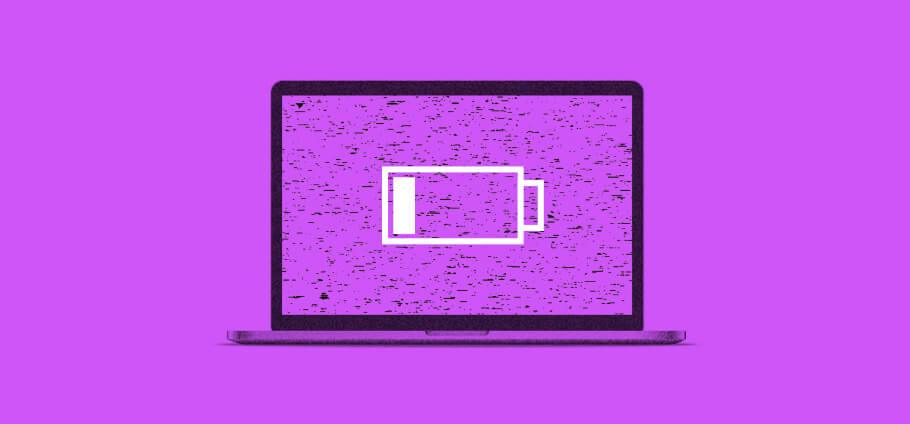It can be hard to spot burnout symptoms, especially when you're working from a home office. At first glance, symptoms of overworking seem pretty innocuous. You might, for example, occasionally experience a lack of concentration, fatigue, signs of mental exhaustion, and irritability. Then, these “occasional” conditions can become frequent enough that they start to feel like a lifestyle. The challenge is that a person on the verge of work burnout rarely has the ability to self-diagnose or reach out for help from therapists or friends.
Unfortunately, the pace of modern life doesn't leave you a chance to stop and take time to relax. When we spot the first signs of burnout, we tend to downplay them and say something like: "It's just stress, it'll go away soon." In doing so, we forget that stress is a serious issue that can snowball into a chronic state and eventually lead to burnout.
That's why it's essential to timely identify the early signs of burnout before your situation becomes more serious. This post will help you spot the first symptoms of overworking. Let's review them.
Factors that put you at risk of work burnout
Work burnout doesn't arrive out of the blue. It develops over time, as a result of factors that you can look out for, like:
- Highly stressful working environment. Of course, every job comes with responsibilities and a certain amount of stress. But some companies and teams can cross the line and create almost unbearable working conditions. If toxic relationships in the workplace, lack of recognition, micromanagement, or an overly-intensive workload become a routine, it may be time to change your team or consider a new job.
- Absence of achievements. Traditionally, we associate burnout with relentless hard work. Psychologists have, however, identified situations in which burnout also develops because of insufficient workload, the absence of accomplishments, and a lack of recognition among your peers. To turn a famous proverb on its head: "All play and no work makes Jack a dull boy."
- Mismatched competencies. A mismatch between your resources (like time, knowledge, or expertise) and the workplace expectations can lead to frustration, anxiety, and feelings of helplessness and incompetence at work. Novices, for example, are prone to work burnout because of double pressure: expectations from management and a lack of expertise, supervision, or training needed to perform their tasks properly.
- Employee disengagement. People sometimes burn out as a result of being required to perform seemingly meaningless tasks, adhere to unreasonably strict rules, or feeling stuck in their career.
As a result of these burnout factors, you might develop symptoms of exhaustion and stress. In the next section, we'll discuss those in more detail.
Signs of burnout to watch for
1. Signs of mental exhaustion
There are certain mental health red flags that can warn you to take action if you notice them. For example, if you are experiencing several of the feelings and events from this list, you may be heading for mental exhaustion:
- Unreasonable anxiety
- Substance or drug abuse to relieve pain or anxiety
- Uncontrolled anger and impatience
- Detachment
- Cynical attitude
- Waking up and going to work requires much more than routine effort
When a person starts to develop the first signs of work burnout, everything can feel like a struggle: going to work, engaging with colleagues, and even performing simple tasks.
These symptoms, however, are common for a number of mental health issues, including chronic stress. There are a number of stages of burnout that have been identified by psychologists, but five distinct stages of burnout can be easier to identify than others, these include: excitement, blaming others for your stress, emptiness, depression, and mental or physical collapse.
Moreover, there are specific physical symptoms that are signs of mental exhaustion.
2. Signs of exhaustion
It can start with fatigue. You may feel as though you are not getting enough sleep and console yourself with the thought that you'll catch up over the weekend. Episodes of fatigue that repeat day after day, are a sign of something more.
That can be when you start to develop symptoms of exhaustion, including frequent headaches, increased blood pressure, digestive issues, difficulty sleeping, and a decrease in immunity. Since people on the verge of burnout often ignore their physical and emotional health, they don't seek timely medical help. This can aggravate their already neglected health.
3. Cognitive issues
Chronic stress can impair the cognitive functioning of the prefrontal cortex – the part of the brain responsible for things like memory, decision-making, and the ability to concentrate. People who are about to burn out can make uncharacteristic mistakes, procrastinate, experience forgetfulness, and have trouble making workplace decisions.
4. Communication issues
Physical and mental exhaustion can lead to communication difficulties. There are two very different ways that burnout can manifest: apathy or workaholism.
In the first case, a person experiencing signs of burnout can't seem to pull themselves together and find the energy to maintain a conversation and demonstrate emotional engagement. Workaholics, on the other hand, can become irritable, critical, and aggressive. In both cases, it's hard to communicate with someone who is on the verge of being burned out, since you have to carefully choose your words to avoid an argument or hurt feelings.
5. Work obsession
One of the more noticeable burnout symptoms is an obsession with work. For example, if you are lying in bed unable to put aside obsessive thoughts about work so that you can relax and fall asleep, or you feel anxious or guilty when you're engaged in any activity other than work, you may be on the verge of becoming a workaholic and burning out.
How to manage symptoms of exhaustion
Once you detect the first signs of burnout, don't freak out. There are things that you can do to successfully address this issue. You may choose to:
- Re-evaluate your life and find a way out of an “all work, all the time” situation. For example, you could discuss your workload with your supervisor to address work challenges and help you achieve a healthier work-life balance.
- Get support. Acknowledge that you have a problem and seek support from your friends, colleagues, support groups and communities, or a mental health professional. Many, many people have experienced job burnout. Engaging with people that have experienced the same issues can help you feel less isolated and start you on your journey to a healthier life.
- Master mindfulness techniques. Mindfulness techniques can help you focus on the present, without attachment, and use breathing techniques to help regulate your level of anxiety and physical tension. Mindfulness is increasingly popular in the work context to help build a sense of trust among colleagues and reduce workplace stress levels.
"Reading motivational books, taking time for walks on my own helped me fight burnout and exhaustion a lot. I needed to find peace within myself, and this helped me a lot. I tried meditation to give my brain at least 10 minutes without the stream of thoughts and worries about work. Also, I clearly defined working hours and non-working hours, when, under no circumstances, I would think about work."

We hope that our suggestions will help you spot common burnout symptoms, and either avoid experiencing this issue or successfully deal with it.

Explore our Editorial Policy to learn more about our standards for content creation.
read more















.jpg)







